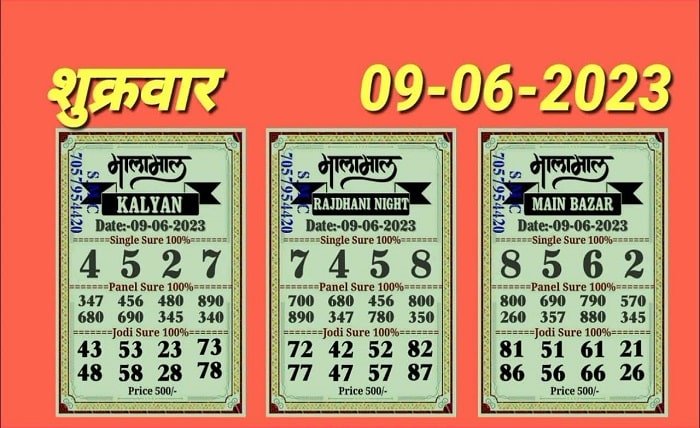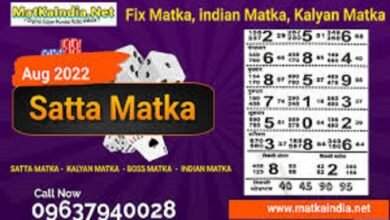
Introduction
The Main Bazar Chart is an essential tool used by enthusiasts and professionals alike in the realm of trading and market analysis. Understanding the Main Bazar Chart is crucial for making informed decisions in the financial markets. This blog post aims to provide a comprehensive guide on the Main Bazar Chart, detailing its significance, components, and how to effectively interpret it.
The Main Bazar Chart serves as a graphical representation of market data, helping traders and investors to visualize trends, patterns, and potential opportunities. By mastering the Main Bazar Chart, one can enhance their trading strategies and improve their market analysis skills. In this guide, we will explore various aspects of the Main Bazar Chart to equip you with the knowledge needed to utilize it effectively.
The Significance of Main Bazar Chart
The significance of the Main Bazar Chart lies in its ability to provide a clear and concise visual representation of market trends. For traders and investors, the Main Bazar Chart is a valuable tool that aids in understanding market movements and making data-driven decisions. It offers insights into price fluctuations, volume changes, and overall market sentiment.
By using the Main Bazar Chart, traders can identify patterns and trends that are not easily discernible through numerical data alone. This visual aid allows for quicker and more accurate analysis, leading to better decision-making and potentially higher profits. The Main Bazar Chart is indispensable for anyone looking to gain a deeper understanding of market dynamics and enhance their trading performance.
Components of the Main Bazar Chart
The Main Bazar Chart is comprised of several key components that collectively provide a comprehensive view of market activity. These components include the price axis, time axis, candlestick patterns, volume bars, and technical indicators. Each element of the Main Bazar Chart plays a crucial role in conveying market information.
The price axis, typically located on the right side of the chart, shows the asset’s price movements over time. The time axis, usually at the bottom, represents the chronological sequence of trading periods. Candlestick patterns indicate the opening, closing, high, and low prices within a specific period. Volume bars show the trading volume for each period, while technical indicators, such as moving averages and Bollinger Bands, provide additional insights into market trends. Understanding these components is essential for effectively interpreting the Main Bazar Chart.
How to Read the Main Bazar Chart
Reading the Main Bazar Chart involves analyzing its various components to gain insights into market behavior. To start, one must understand the basics of candlestick patterns, as they are fundamental to the Main Bazar Chart. Each candlestick represents a specific time period and provides information on the opening, closing, high, and low prices.
Next, it’s important to analyze the volume bars to understand the trading activity. High volume typically indicates strong interest and can validate price movements. Technical indicators also play a vital role in reading the Main Bazar Chart. For instance, moving averages can help identify trends, while Bollinger Bands can indicate volatility. By combining these elements, traders can develop a comprehensive view of market conditions and make informed decisions based on the Main Bazar Chart.
Common Patterns in Main Bazar Chart
Patterns in the Main Bazar Chart can provide valuable insights into potential future market movements. Some common patterns include head and shoulders, double tops and bottoms, triangles, and flags. Recognizing these patterns can help traders predict potential price reversals or continuations.
The head and shoulders pattern, for example, is a reversal pattern that indicates a potential change in trend direction. A double top pattern suggests a bearish reversal, while a double bottom indicates a bullish reversal. Triangles, on the other hand, can signal a continuation of the current trend. By familiarizing themselves with these patterns, traders can use the Main Bazar Chart to identify profitable trading opportunities and enhance their market analysis skills.
Utilizing Technical Indicators on Main Bazar Chart
Technical indicators are essential tools for analyzing the Main Bazar Chart. These indicators provide additional layers of information that can help traders make more informed decisions. Some popular technical indicators used on the Main Bazar Chart include moving averages, relative strength index (RSI), and Bollinger Bands.
Moving averages smooth out price data to identify trends, with the simple moving average (SMA) and exponential moving average (EMA) being the most common types. The RSI measures the speed and change of price movements, indicating overbought or oversold conditions. Bollinger Bands consist of a middle band (SMA) and two outer bands that represent standard deviations, helping to identify periods of high or low volatility. By incorporating these technical indicators into their analysis, traders can gain deeper insights from the Main Bazar Chart.
Strategies for Trading Using Main Bazar Chart
Trading strategies based on the Main Bazar Chart can vary widely, but some common approaches include trend following, breakout trading, and mean reversion. Each strategy leverages the insights provided by the Main Bazar Chart to capitalize on market opportunities.
Trend following involves identifying and trading in the direction of the prevailing trend. Traders use the Main Bazar Chart to spot trends and enter trades when the trend is confirmed. Breakout trading focuses on identifying key support and resistance levels on the Main Bazar Chart and entering trades when the price breaks through these levels. Mean reversion strategies assume that prices will revert to their mean over time, and traders use the Main Bazar Chart to identify overextended price movements. By applying these strategies, traders can enhance their performance and leverage the Main Bazar Chart effectively.
The Role of Main Bazar Chart in Risk Management
Risk management is a critical aspect of successful trading, and the Main Bazar Chart plays a vital role in this process. By providing clear visual representations of market data, the Main Bazar Chart helps traders set stop-loss levels, determine position sizes, and identify potential risks.
Traders use the Main Bazar Chart to identify key support and resistance levels, which can serve as stop-loss points. Setting stop-loss orders at these levels helps limit potential losses. Additionally, the Main Bazar Chart can help traders determine appropriate position sizes by assessing volatility and historical price movements. By incorporating the Main Bazar Chart into their risk management strategies, traders can better protect their capital and improve their overall trading performance.
Tools and Software for Main Bazar Chart Analysis
There are numerous tools and software available for analyzing the Main Bazar Chart. These tools provide advanced features that enhance the charting and analysis experience. Popular platforms like TradingView, MetaTrader, and NinjaTrader offer comprehensive charting capabilities, technical indicators, and customization options.
TradingView is known for its user-friendly interface and extensive library of technical indicators. MetaTrader is widely used by forex and CFD traders, offering powerful charting tools and automated trading capabilities. NinjaTrader provides advanced charting features and is popular among futures and options traders. By leveraging these tools, traders can perform detailed analysis of the Main Bazar Chart and make more informed trading decisions.
Future Trends in Main Bazar Chart Analysis
The field of Main Bazar Chart analysis is continually evolving, with new technologies and methodologies enhancing the way traders interpret market data. Artificial intelligence (AI) and machine learning are increasingly being integrated into chart analysis tools, providing more accurate predictions and insights.
AI-driven algorithms can analyze vast amounts of historical data to identify patterns and trends that may not be apparent to human analysts. Machine learning models can adapt and improve over time, offering dynamic and predictive capabilities for Main Bazar Chart analysis. Additionally, advancements in data visualization techniques are making it easier for traders to interpret complex data. These future trends promise to further revolutionize the use of the Main Bazar Chart in trading and market analysis.
Conclusion
The Main Bazar Chart is an indispensable tool for traders and investors, providing a visual representation of market data that aids in analysis and decision-making. By understanding its significance, components, and how to read it, traders can enhance their market analysis skills and improve their trading performance. From identifying common patterns to utilizing technical indicators and implementing effective trading strategies, the Main Bazar Chart offers a wealth of insights for navigating the financial markets.
As technology continues to advance, the future of Main Bazar Chart analysis looks promising, with AI and machine learning poised to further enhance its capabilities. By staying informed about these trends and leveraging advanced tools and software, traders can continue to refine their use of the Main Bazar Chart and achieve greater success in their trading endeavors.
FAQs
1. What is the Main Bazar Chart? The Main Bazar Chart is a graphical representation of market data used by traders and investors to visualize trends, patterns, and potential opportunities.
2. How do you read a Main Bazar Chart? Reading a Main Bazar Chart involves analyzing its components, such as candlestick patterns, volume bars, and technical indicators, to gain insights into market behavior.
3. What are common patterns in the Main Bazar Chart? Common patterns in the Main Bazar Chart include head and shoulders, double tops and bottoms, triangles, and flags, which can indicate potential price movements.
4. How can technical indicators enhance Main Bazar Chart analysis? Technical indicators, like moving averages and RSI, provide additional layers of information, helping traders identify trends, overbought/oversold conditions, and market volatility.
5. What tools are available for Main Bazar Chart analysis? Popular tools for Main Bazar Chart analysis include TradingView, MetaTrader, and NinjaTrader, offering advanced charting capabilities and technical analysis features.
chartink is a popular stock market screener offering advanced technical analysis, filters, and alerts. Ideal for traders and investors to monitor stock trends, identify opportunities, and make informed decisions.





